
Wesley Merritt was an American major general who served in the cavalry of the United States Army during the American Civil War, American Indian Wars, and Spanish–American War. Following the latter war, he became the first American Military Governor of the Philippines.

John Cleveland Robinson was an American soldier in the United States Army. Robinson had a long and distinguished military career, fighting in many wars and culminating his career as a brigadier general and brevet major general in the Union Army during the American Civil War.
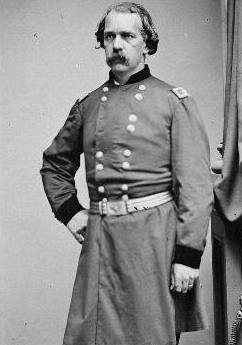
John Henry Hobart Ward was an American soldier who fought in the Mexican–American War and in the American Civil War. Ward joined the army in 1842 and fought in multiple battles in the Mexican–American war, including the Battle of Monterrey, where he was wounded. After leaving the army, he served successively as the assistant commissary general and commissary general for the state of New York. With the outbreak of the American Civil War in 1861, Ward rejoined the army, and became the colonel of the 38th New York Infantry Regiment. Ward and his regiment were engaged in the First Battle of Bull Run and in several battles in the Peninsula campaign. He was promoted to command a brigade after the Battle of Chantilly in September 1862.

John Rutter Brooke was one of the last surviving generals of the American Civil War when he died aged 88.

Frederick Steele was a career military officer in the United States Army, serving in the Mexican-American War, the Yuma War, and as a major general in the Union Army during the American Civil War. He was most noted for retaking much of secessionist Arkansas for the Union cause, escaping the besieged port-city of Camden through successful deception tactics, and defeating Sterling Price and E. Kirby Smith at Jenkins Ferry.
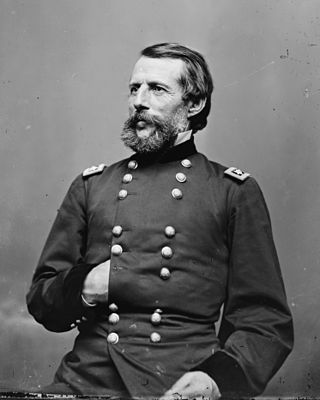
Erasmus Darwin Keyes was a businessman, banker, and military general, noted for leading the IV Corps of the Union Army of the Potomac during the first half of the American Civil War.

Thomas Casimer Devin was a United States Army officer and general. He commanded Union cavalry during the American Civil War and during the Indian Wars.

James Jay Archer was a lawyer and an officer in the United States Army during the Mexican–American War. He later served as a brigadier general in the Confederate States Army (CSA) during the American Civil War.

John Irvin Gregg was a career U.S. Army officer. He fought in the Mexican–American War and during the American Civil War as a colonel and near the end of the war as a brevet general in the Union army. In 1866, he was nominated and confirmed as a brevet major general of volunteers and a brevet brigadier general in the Regular Army, both to rank from March 13, 1865.

Robert Christie Buchanan was an American military officer who served in the Mexican–American War and then was a colonel in the Union Army during the American Civil War. In 1866, he was nominated and confirmed for appointment to the grades of brevet brigadier general and major general in the Regular Army for valor in several battles, to rank from March 13, 1865. In a career that spanned more than forty years, Buchanan held numerous commands and received multiple citations for bravery and distinguished service.
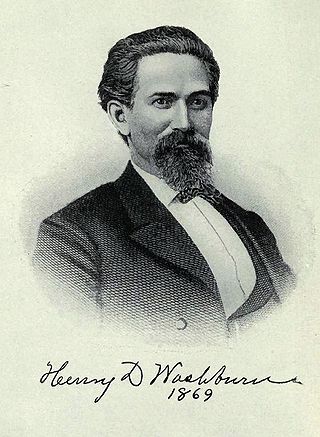
Henry Dana Washburn was a U.S. Representative from Indiana and a colonel and was breveted twice as brigadier general and major general in the Union Army during the American Civil War.

Charles Kinnaird Graham was a sailor in the antebellum United States Navy, attorney, and later a brigadier general in the Union Army during the American Civil War. As a civil engineer, he helped plan and lay out Central Park in New York City.

Henry Eugene Davies was an American soldier, writer, public official and lawyer. He served in the Union Army as a brigadier general of volunteers in cavalry service during the American Civil War and was promoted to the grade of major general of volunteers at the end of the war. Davies was one of the few nonprofessional soldiers in the Union cavalry in the East to be promoted to the grade of general. He led his brigade in several major battles, especially during the Overland Campaign, the Battle of Trevilian Station, the Siege of Petersburg and the Appomattox Campaign at the end of the war.
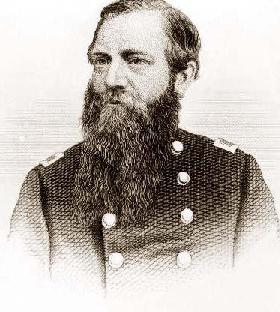
Richard Coulter, Sr. was an American Civil War Colonel and brevet brigadier general of volunteers in the Union Army, a businessman, and banker. During the Civil War he was colonel of the 11th Pennsylvania Infantry, often rising to brigade command upon the wounding of superior officers. In 1866, he was nominated and confirmed as a brevet major general of volunteers to rank from April 1, 1865.
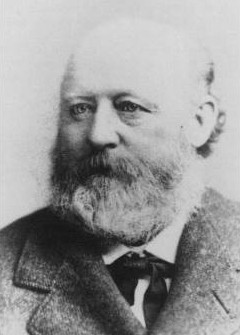
Henry Brevard Davidson was a graduate of the United States Military Academy and an officer in the United States Army in the West before the American Civil War. At the outbreak of the war, he resigned his commission and served in various staff positions in the Confederate States Army. On August 18, 1863, he was promoted to brigadier general and first commanded brigades of cavalry in the Western Theater, particularly in Tennessee and Georgia. In 1864, he was transferred to Virginia and served in the Valley Campaigns of 1864. At the end of the war, he served under General Joseph E. Johnston in the Carolina Campaign. After the war, he became a civil engineer in California and in 1887 was deputy secretary of state in California. Later in life, he was an agent for the Southern Pacific Railroad in Danville, California.
Hispanics in the American Civil War fought on both the Union and Confederate sides of the conflict. Not all the Hispanics who fought in the American Civil War were "Hispanic Americans" — in other words citizens of the United States. Many of them were Spanish subjects or nationals from countries in the Caribbean, Central and South America. Some were born in what later became a U.S. territory and therefore did not have the right to U.S. citizenship. It is estimated that approximately 3,500 Hispanics, mostly Mexican-Americans, Puerto Ricans and Cubans living in the United States joined the war: 2,500 for the Confederacy and 1,000 for the Union. This number increased to 10,000 by the end of the war.

Francis Engle Patterson was an American military officer who served as a captain in the United States Army during the Mexican-American War and as a Union Army brigadier general during the American Civil War.

Isham Nicholas Haynie (1824-1868) was a lawyer, politician, soldier and officer in the Union Army during the American Civil War. He was colonel of the 48th Illinois Volunteer Infantry Regiment at the battles of Fort Donelson and Shiloh.
Adolph Engelmann was a farmer, lawyer, postmaster, Mexican–American War veteran, and Union Army colonel during the American Civil War. On May 18, 1866, the United States Senate confirmed his appointment as brevet brigadier general of volunteers.

William Hopkins Morris was an American soldier, an officer in the United States Army, author, editor, and inventor. He served as a brigadier general of volunteers in the Union Army during the American Civil War.



















